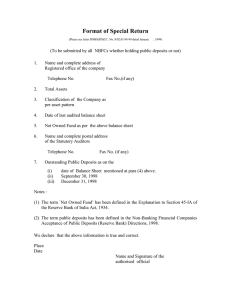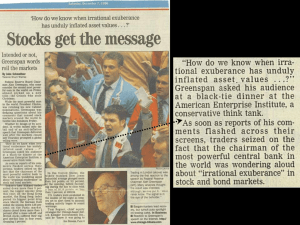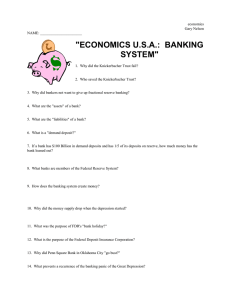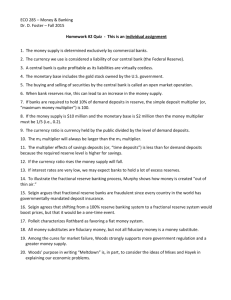1. Concepts a. A self-sufficient economy is called autarky economy.
advertisement
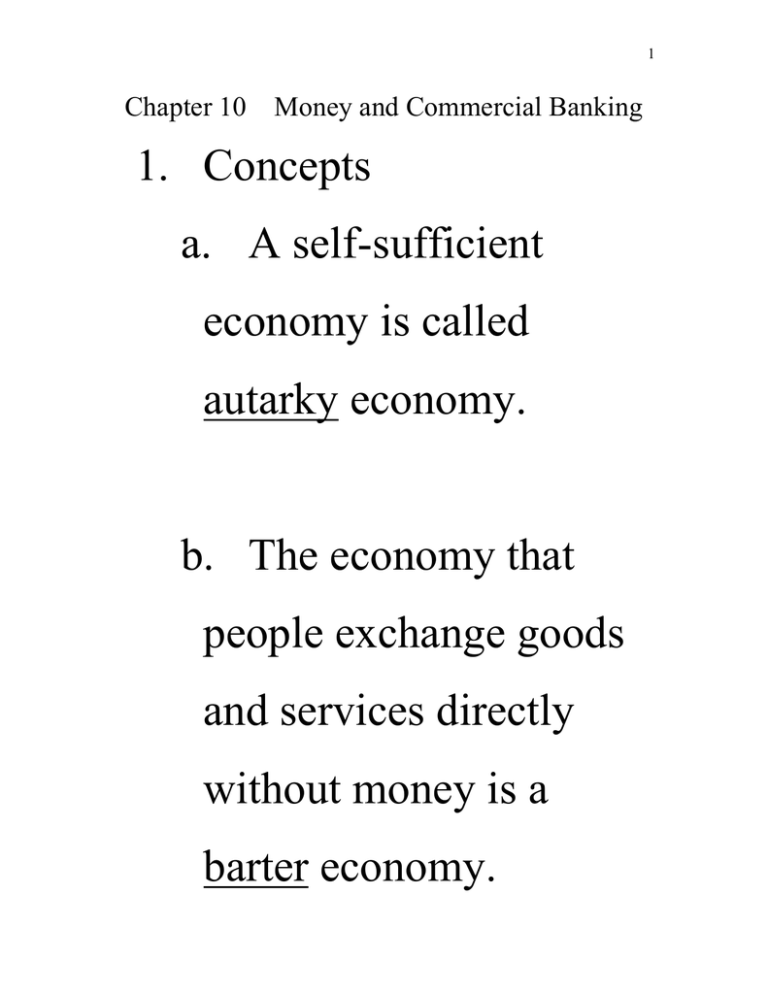
1 Chapter 10 Money and Commercial Banking 1. Concepts a. A self-sufficient economy is called autarky economy. b. The economy that people exchange goods and services directly without money is a barter economy. 2 c. When people concentrate their effort on a particular work, specialization occurred. And people became interdependent. 3 To maintain the current living standard, people MUST trade. 4 d. A situation in which one person’s desire must mutually match the desires of the other is double coincidence of wants. 5 Example: which of the following people have double coincidence of wants? Adam Brace has 3 pairs wants 1 of shoes jacket has 1 jacket wants 1 chair Chris has 1 chair wants 2 jackets Denise has 1 jacket wants 3 pairs of shoes 6 e. Money – anything that people accept in exchange for goods and services. 7 f. Three functions of money Medium of exchange When money is exchanged for good and services, it serves as medium of exchange. (buying and selling) 8 Unit of account When money is used to measure the value of a product, it serves as unit of account. (price tag, book keeping) 9 Store of value Money allows value to be held over time. (Deposits, savings…) 10 g. Types of money Commodity is used as medium of exchange commodity money. It has intrinsic value. 11 Paper money is backed by gold – Gold standard. Paper money and coin that the government decrees as money fiat money. 12 It has no intrinsic value. 2. Money supply – amount of money circulating in the economy. 13 How to measure money supply (MS)? a. M1 (transaction money) M1 = currency + Demand deposits + checkable deposits +Traveler’s checks 14 b. M2 (broad money) M2 = M1 + Saving deposits + small time deposits + Money Market Mutual Funds. 15 3. How commercial banking developed from goldsmith a. Goldsmith b. Balance sheet of a bank Fractional Reserve Banking 16 c. Reserve ratio - the ratio of deposits the bank are legally required to hold as cash in the vault or as deposits at the Federal Reserve Banks Balanced sheet for all banks 17 4. Money creation How much would money supply increase if you deposit $1000 into a bank, given that the reserve ratio is 20%? 18 a. Money multiplier = 1/reserve ratio b. Changes in money supply = (money multiplier)(initial deposit)
